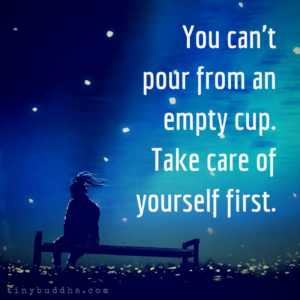guest blog by Katie Jost
If you are reading this right now, it can be assumed you are breathing! According to James Nestor, the author of the 2020 New York Times bestseller book, Breath: The New Science of a Lost Art, you will likely take around 670 million breaths in your lifetime. However, the quality and nuance of that breath are unique to you, meaning you have a personal relationship with your breath.
Perhaps you have already practiced some mindful breathing. Or maybe, like many, you have encountered health conditions that present with difficulty breathing or cause you to feel short of breath. If you are healthy and comfortable with experimenting with breathwork, you might even try the breathing exercise resource offered below.
What is Pranayama?
Before I answer that question, take a moment right now to become aware of your breathing. You might focus your attention on the air entering and exiting and may notice how the air is cooler as it enters your nostrils than when it exits. If you wanted to explore further, you might become aware how deep or shallow your breath is as your diaphragm expands and contracts.
If you just followed along those prompts, you took a small moment out of your day to notice your breath mindfully. In other words, you just practiced pranayama, one of the eight limbs of yoga, which involves breathing in a controlled manner. The term pranayama is a Sanskrit word and can be broken down as prana (vital energy) and ayama (control). This translates to “extension of life force”. Pranayama exercises, or mindful breathing exercises, have you voluntarily direct the respiratory frequency, puraka (inhalation), kumbhaka (retention), and rechaka (exhalation).
In its most fundamental sense, pranayama, as both a state of mind and a technique, is thought to nurture the relationship between breath and emotions. Although much yoga may focus on the asanas (postures), some form of pranayama will most likely accompany any form of yoga you practice. Afterall, the word yoga means “to yoke” or “to unite,” and breath is a key component of unifying the mind and body.
Depending on the length, duration and depth of breath, pranayama breathing techniques are divided into many different categories, all thought to produce differing mental and physical benefits. From detoxifying the body to increasing energy or calming the mind, the spectrum is vast and until recently, most evidence to support these benefits was anecdotal. Pranayama is both an art and a science.
Related Reading: A Guide to Surviving the Holidays by Utilizing Mindfulness
Your Personal Relationship to Breath
It is important to recognize that breathwork is personal. What feels good for one person may not feel good to you. If experimenting with pranayama, it is imperative that you listen to your body by discontinuing the exercise if something does not feel right to you.
Breathwork has caught on in mainstream culture as a key component of the mindfulness movement. Like most trends, pranayama has found itself recycled and, in many instances, rebranded and altered to fit current times and audiences. However, pranayama extends back for centuries into ancient traditions of India.
In addition, concepts like the idea of prana as vital energy can be found in other ancient regions and cultures, such as China (ch’i), Japan (ki), Greece (pneuma), and many more. Regardless of how you choose to consider pranayama in relation to modern medicine or any other context to which it might be applied, many have found controlled breathing to harmonize their physical, mental, emotional, and/or spiritual health.
How Can Pranayama Help with Stress?
As you undoubtedly already know, stress can have a formidable impact on your physical and mental health. Stress is not necessarily a diagnosis. It can be characterized as a state of being, where there is disharmony between the emotional and physical aspects of your overall health. Stress can also impact some of your body’s hormone levels, like cortisol and adrenaline, which are tied to the state of your nervous system.
While there are fewer studies on the impact of yogic breathwork on mental health than there are on the benefits of yoga in general, there is evidence to suggest pranayama may boost positive mood, and self-regulation, and reduce clinical levels of stress and anxiety.
Another study found that yogic breathing reduced anxiety and depressive symptoms in individuals with treatment-resistance generalized anxiety disorder. Other current studies show pranayama may help with cardiac and pulmonary functioning. Slow breathing has been found to reduce levels of stress, leading to a host of additional physiological and psychological benefits.
It’s important to understand that breathing is one of the few ways your body can be in both conscious control and automatic function mode. In the context of stress and anxiety, this is key because it offers you the power to choose mindful breathing as a tool.
Benefits of Mindful Breathing Exercises:
- Increase lung capacity
- Reduce stress
- Improve concentration
- Support immune system health
- Reduce high blood pressure
- Increase brain function
- Aid in digestion
- Help with sleep problems
How Controlled Breathing Helps Your Nervous System
One piece to the puzzle of understanding how you can benefit from controlled breathing can be found in the relationship between the autonomic nervous system and stress. The autonomic nervous system (ANS) is the part of your nervous system in charge of the body’s automatic functioning and is a crucial element for survival. Although far too complex to address here in full, there are essentially two branches of the autonomic nervous system known as the sympathetic nervous system and the parasympathetic nervous system. Each plays a role in how your body responds to perceived safety or danger.
If you’ve ever noticed yourself sweating or your heart pounding when going into a job interview or when the spotlight feels more like the hot seat, and you feel the impulse to get up and run, you understand what it feels like to have your sympathetic nervous system activated. Known as the fight-or-flight response, a system of nerves aids your body in responding to threatening or stressful circumstances by preparing your body to act. When you encounter danger, you may experience increased heart rate, sweating, nausea, temperature changes, shaking, shortness of breath, or sharpened eyesight.
Fight-or-flight is your system’s first line of defense. This built-in alarm system in your body overrides executive functioning, and you can quite literally lose your ability to reason. While these mechanisms might have saved your ancestors from a predatory attack, they are not always helpful in a stimulating modern-day context. Overreactive sympathetic responses can snowball into a variety of mental and/or physical health challenges, and this kind of stress can take a serious toll on your quality of life.
The parasympathetic nervous system balances the sympathetic nervous system and is responsible for the body during times of rest. Studies suggest that a pranayama sequence of alternate nostril breathing is linked to activation of the parasympathetic nervous system, which puts the brakes on your body’s excitatory fight-or-flight response.
Stephen Porges, creator of polyvagal theory, coined the term: neuroception to describe the way your inner surveillance system scans for safety and danger without your conscious awareness. This is your body’s way of telling your mind you are safe or you are in danger faster than you can think it. It helps your body react almost instantly in a crisis. Controlled breathing through nadi shohana pranayama (alternate nostril breathing) is one way you can override this automatic response in moments you know your surroundings to be safe, but perhaps your body’s system can’t seem to get that message.
Types of Mindful Breathing
Not all breathwork will stimulate the parasympathetic nervous system’s calming response. So if you are looking for a calming effect, it is crucial to choose an breathing exercise or pranayama meditation known to produce a calming effect. For example, nadi shohana brings on the calm of the parasympathetic nervous system but also has a slightly energizing effect, making it less ideal for bedtime. Another exercise, 4-7-8 Breathing, is a better choice for those who are looking to support sleep.
Interested in learning more? Life Care Wellness therapists can assist you in weaving breathwork and mindful breathing tools into everyday moments to help you regulate moments of high-stress activation and increase resiliency.
Katie Jost is a graduate intern at Life Care Wellness, a group psychotherapy practice in Glen Ellyn, Illinois with additional offices in Sycamore and Chicago (Jefferson Park neighborhood). Her training in Somatic Experiencing informs her mind/body centered approach to treating trauma and other mental health challenges. Katie’s relationship with fine arts, mindfulness meditation, breathwork, dance and yoga also contribute to her respect for a holistic and person-centered perspective.






